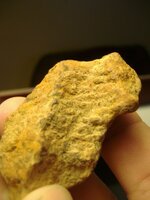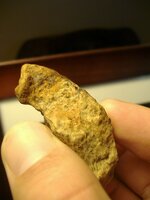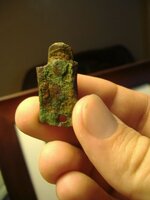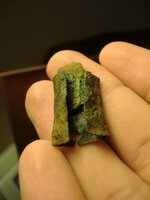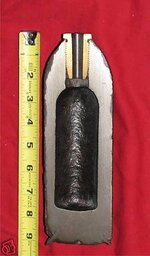Kiros32
Bronze Member
- Feb 21, 2006
- 1,407
- 441
- Detector(s) used
- XP Deus, Whites MXT
- Primary Interest:
- All Treasure Hunting
Shrapnel ID and Brass/Copper What's It
Both of these were found in a field where I have pulled many CW relics before, and the only other things found in this field have been farm equipment related iron.
The first object is shrapnel of some sort, but I was hoping to ID the type. The shape and fuse threads remind me of a parrot shell. Any idea what this would be from?
The second object is brass I think, but could be copper. The bottom has a small hole, and it looks like it has been bent in on both sides. Any ideas on this one?
Both of these were found in a field where I have pulled many CW relics before, and the only other things found in this field have been farm equipment related iron.
The first object is shrapnel of some sort, but I was hoping to ID the type. The shape and fuse threads remind me of a parrot shell. Any idea what this would be from?
The second object is brass I think, but could be copper. The bottom has a small hole, and it looks like it has been bent in on both sides. Any ideas on this one?


